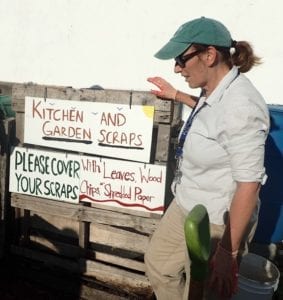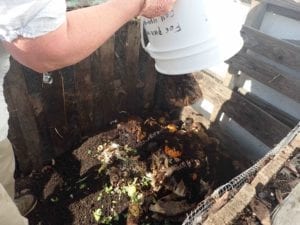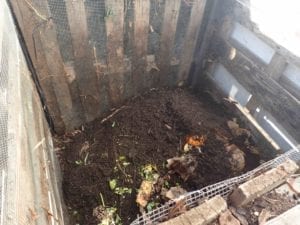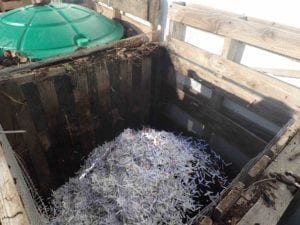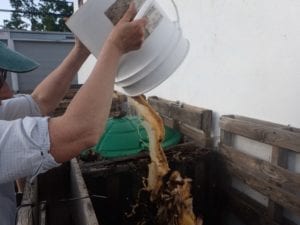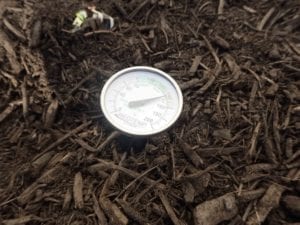All around the world people are staying at home, and many—even some who have shown little interest in past years—are desperate to garden. Growing your own food is a balm for the anxious mind. Plus, you don’t have to strap on a facemask to get food from your backyard! It is always fresh, and undeniably safe.
The most basic requirement for a successful vegetable garden is healthy soil. Good soil holds moisture, but doesn’t become waterlogged. It’s loose and friable, and it has a good balance of nutrients. The absolute best way to make sure your soil has these qualities is to add compost to it every year.
In past years, Nurture Nature Center has held composting workshops (and we will again!). In the photo above, Sophia Feller is demonstrating her all-in-one method for producing a bin of compost in less than two months, without turning the pile. Follow the steps below to find out how she was able to do that. But keep in mind that any method of composting will result in an organic material that will increase the productivity of your soil.
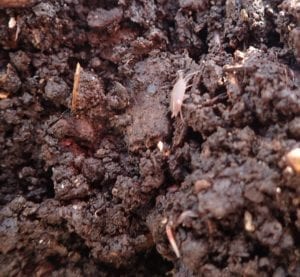 A healthy compost pile will be loaded with invertebrates. Primary consumers—earthworms, mites millipedes, sowbugs, earthworms, and others—eat the leaves, weeds, and apple cores that you put in your bin. Secondary consumers, such as springtails, nematodes, and feather-winged beetles, eat the primary consumers. And earwigs, rove beetles, ants, predatory mites, and others eat the secondary consumers. All are part of the community, and part of the process.
A healthy compost pile will be loaded with invertebrates. Primary consumers—earthworms, mites millipedes, sowbugs, earthworms, and others—eat the leaves, weeds, and apple cores that you put in your bin. Secondary consumers, such as springtails, nematodes, and feather-winged beetles, eat the primary consumers. And earwigs, rove beetles, ants, predatory mites, and others eat the secondary consumers. All are part of the community, and part of the process.
It’s helpful to have an enclosure for your compost pile. It should be at least 3 ft by 3 ft. Save your kitchen scraps and weeds, your brown leaves, shredded paper, even pet hair! Layering green materials (food scraps, coffee grounds, seed-free weeds, grass clippings, manure) with brown (dried leaves, pine needles, wood chips, shredded paper) and turning the pile frequently will give you the fastest and best results. But if you don’t have access to the ideal mix of materials, a more haphazard approach will also produce compost—it will just take longer.
Step-by-Step No-Turn Compost
Step 1: Start with a bottom layer of leaves or wood chips, and add kitchen scraps or other green materials. Sophia collected buckets of scraps from local coffeehouses and juice bars. Having a large quantity of “green” materials makes it possible to layer an entire bin with compostables all at once.
Note that the bin is constructed using free shipping pallets, and lined with wire mesh.
Step 2: Cover the “green” layer with wood chips or another “brown,” such as dried leaves collected and bagged in fall. Raw wood chips can often be obtained free from an arborist, and will help keep the pile aerated. Shredded paper is also considered a “brown,” and can be layered over the wood chips.
Step 3: Add another layer of “green” materials.
Steps 4, 5, and so on: Continue to layer “green” and “brown” until the bin is full. Top off the bin with wood chips or dried leaves.
The right balance of “green” and “brown” will cause the pile to heat up. A hot pile will compost much more quickly than a cold pile. Add a layer of finished compost to your garden soil every year, and put a shovelful in each hole when planting tomatoes.


